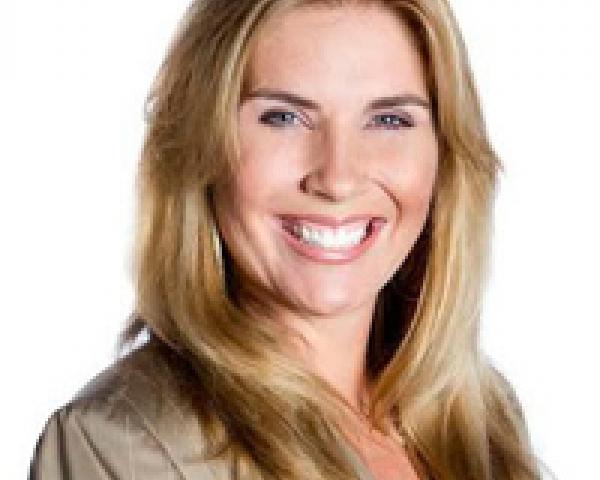The words “platform” and “ecosystem” are trending and in danger of becoming overused and losing their true meaning, but when used in the proper context they are powerful and highly relevant. The insurance claims management process is a perfect use case for just how critical these structures can be in achieving transformation. And my latest endeavor with Claim Central Consolidated is an excellent example of a platform and ecosystem that enables carriers to make that happen.
The property claims process has historically been stubbornly long, complex and more costly than necessary. The factors contributing to these conditions include a disjointed overall workflow, which is a result of the many manual tasks, different staff and third-party skills required and the disparate, non-integrated systems needed to fully adjudicate and resolve the claim.
In simple terms, a platform is a group of technologies that are used as a base upon which other applications, processes or technologies are developed. The word "ecosystem" derives from the Greek words oikos meaning "home," and systema, or “system.” In the early 1990s (go, class of 1990), James F. Moore originated the strategic planning concept of a business ecosystem, now widely adopted in the insurtech community.
Using biological ecology as a metaphor, Moore revealed how today's business environment parallels the natural world and how, just like organisms in nature, companies must coexist and coevolve within their own business ecosystems. He identified radically new cooperative and competitive relationships and provided a comprehensive framework that businesses can use to enhance their own collaborations with their customers, suppliers, investors and communities. Who knew we would be applying this type of thinking to technology?
Platforms and Ecosystems for Insurance Claims
Powerful and exciting insurance industry ecosystems have emerged – made possible by digitization – and continue to evolve like living organisms, as connected sets and cluster ecosystems within the larger and broader ecosystem of services in a single integrated experience. Platforms enable and support ecosystems in that they connect offerings from cross-industry and inter-industry players in P&C, Life, Health and Accident.
Platforms and the ecosystems they support will increasingly enable insurers to turn strategic visions into realities. Today, insurers succeed by offering products. In the future, insurers will win by providing access to risk prevention and assistance services—and by offering the right product to the right customer at the right time.
Claim Central Consolidated
Many people have asked what I’ve been working on since exiting WeGoLook. I am thrilled to be spearheading the perfect example of the power and potential of a platform-based ecosystem within Claim Central Consolidated, a global leader in property and auto insurance claims technology, services , data and insights, and pioneers of digital claims fulfilment. Our market-leading technology solutions are completely transparent, simplifying the claims process and significantly improving policyholder service satisfaction on behalf of leading insurers across the globe.
See also: Insurance Ecosystems: Opportunity Knocks
Developed and proven in Australia, Claim Central recently expanded to the U.S. market, initially focusing on the property claims market with the successful rollout of TradesPlus – a network of over 40 trades types which are easily accessed within our Exchange. The Claim Central platform comprises three basic components offering a number of solutions and choices within many evolving cluster ecosystems embedded in our broader platform:
- ClaimLogik Plus end-to-end claims lifecycle management platform, built with the vision of providing a single platform that connects all parties involved in resolving a claim, available in three purpose-built versions;
- Growth Edition – best suited to smaller businesses such as 1099’s
- Business Edition – best suited to SME scale insurers, IA firms or TPA’s;
- Enterprise Edition – best suited to higher volume claims handling such as larger TPAs or carriers
- TradesPlus+ Managed Repair
- cloud-based platform connecting insurers directly with a pre-screened, on-demand marketplace of suppliers to carry out claim-related services and property repairs.
- Insurers have direct access to suppliers including:
- Contractors
- Emergency Services
- Inspectors
- Adjusters
- Experts
- Housing
- Virtual Inspections as a Service (VIaaS)
- connects remote desktop assessors directly with policyholders to inspect and assess their claims using our live video streaming and collaboration platform LiveLogik
- enables insurers to secure inspections and damage assessments without the risk, cost and time associated with deploying traditional field adjusting resources during the COVID-19 crisis.
The Power and Potential of Ecosystems
McKinsey research found that ecosystems will generate $60 trillion by 2025 which will constitute 30 percent of global sales in that year. Consequently, many insurance executives are looking beyond industry borders to understand the growing opportunities and threats that come from new partners and competitors in the ecosystems relevant to them, from mobility to healthcare and beyond.
Platform businesses are the most efficient value creators, compared to other types of businesses, because they harness the power of distributed supply and network effects. The network effect is a phenomenon whereby increased numbers of people or participants improve the value of a product or service.
Purpose-Built Insurance Ecosystems
The P&C insurance industry has already developed ecosystems to support specific business functions, and continues to do so. Some of the earlier examples date back to 1980 when information providers developed platforms linking auto insurers to collision repair facilities for the purpose of streamlining the accident repair process. These ecosystems quickly expanded to include independent appraisers and adjusters, autoglass and car rental vendors, salvage pool and towing operators, parts providers and others. Today they are beginning to include telematics service providers and auto manufacturers and dealers.
New property claims ecosystems such as Claim Central have emerged to include a full suite of segment specific cluster ecosystems including contractors, inspection technology, digital payments and other service providers which enable insurers to resolve claims in hours instead of days or weeks. According to Paul Carroll, editor-in-chief of Insurance Thought Leadership, "Innovation will focus less on bells and whistles and more on improvements across entire processes and organizations. But incumbents must start preparing."
See also: The Word of the Year Is…’Ecosystems’
Ecosystems: Not if but When
Look no further for a brilliant and powerful new ecosystem extension than the recent announcement that Credit Karma, a unit of Intuit, has partnered with Progressive Insurance to offer usage-based auto insurance to Credit Karma’s millions of financial service smartphone app members using its integration with DMVs to obtain instant driver and vehicle information.
“It is not a matter of if, but when the insurance industry will have to adopt an ecosystem approach. The industry is not immune to the changing demands of the market” - Dr. Geoffrey Parker, Professor of Engineering at Dartmouth College and a visiting scholar and Fellow at the MIT Initiative on the Digital Economy.
I feel blessed and excited to be a tiny part of it!








